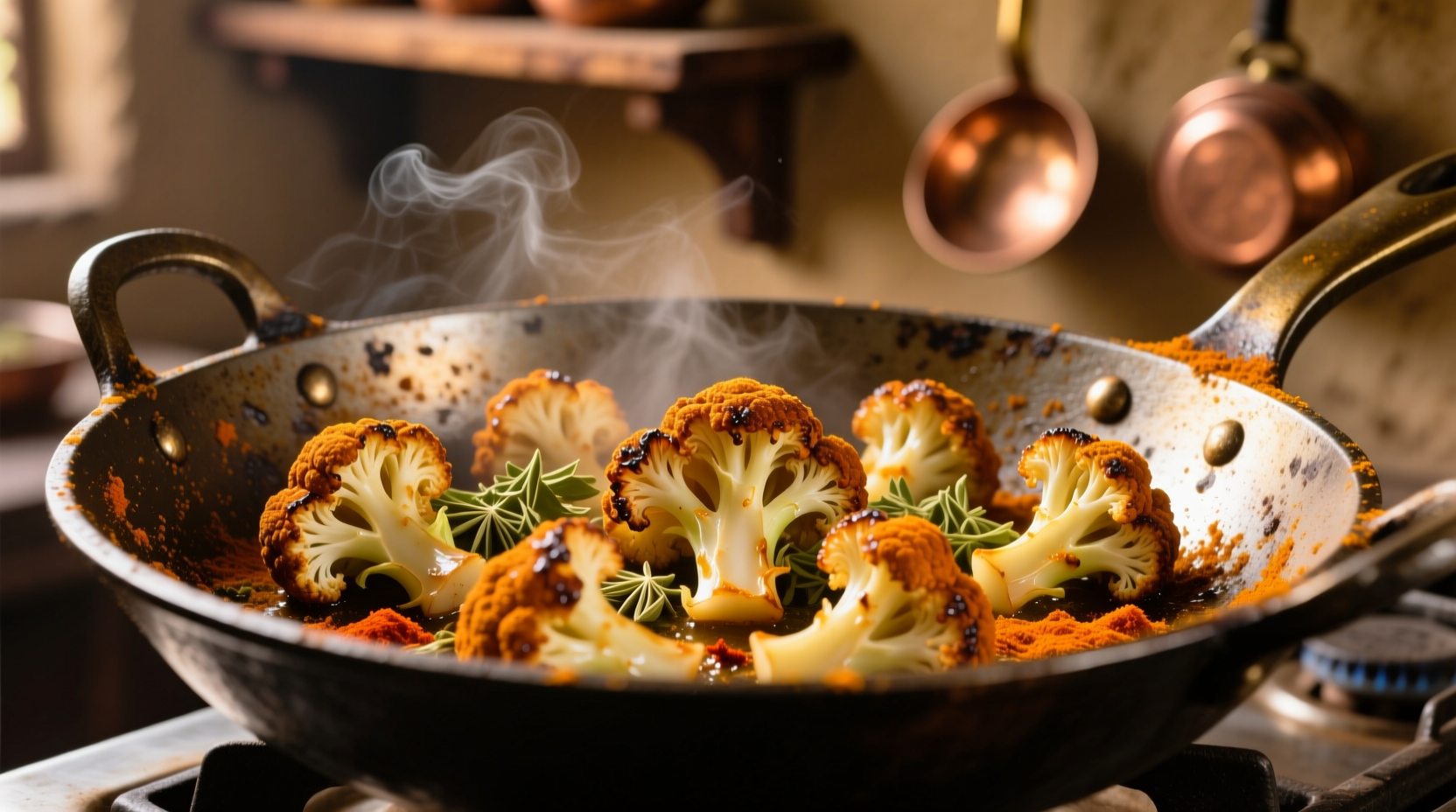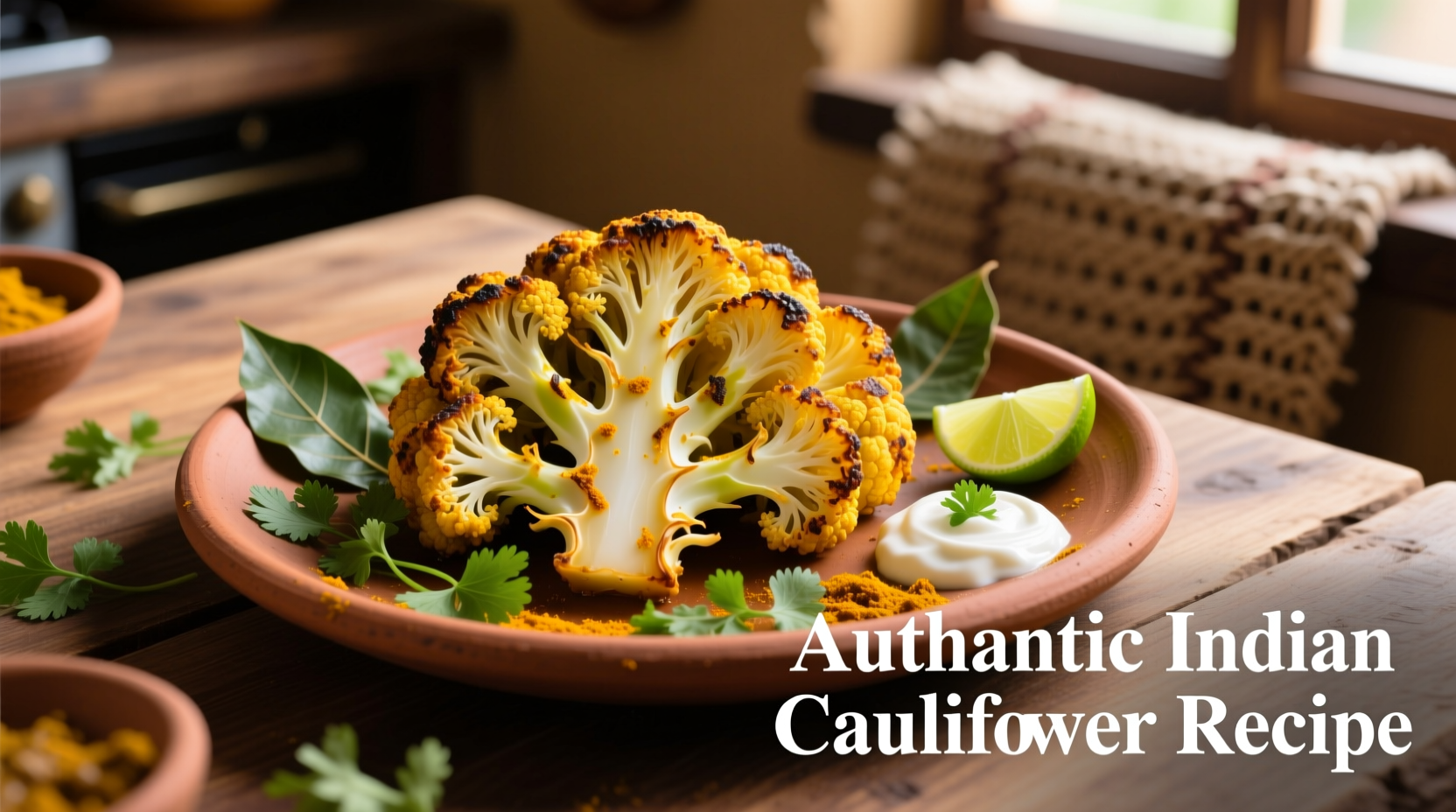Indian cuisine transforms humble cauliflower into extraordinary dishes through masterful spice combinations and cooking techniques perfected over centuries. As a staple in vegetarian Indian cooking, cauliflower (known as gobi in Hindi) absorbs flavors beautifully while maintaining its texture through various cooking methods. This guide delivers five authentic recipes ranging from North Indian classics to regional specialties, complete with professional chef tips that ensure perfect results every time.
Why Cauliflower Thrives in Indian Cuisine
Cauliflower's journey to becoming an Indian kitchen essential began during British colonial rule when it was introduced from Europe. Unlike many imported ingredients, cauliflower found immediate acceptance due to its compatibility with India's vegetarian traditions and its remarkable ability to carry complex spice profiles. Today, it appears in countless regional variations across the subcontinent, from the creamy curries of Punjab to the tangy stir-fries of Maharashtra.
| Regional Variation | Signature Spice Profile | Unique Preparation Method | Best Served With |
|---|---|---|---|
| Punjabi Gobi Masala | Tomato-based with ginger, garlic, garam masala | Double cooking: fried then simmered in gravy | Naan or roti |
| Gujarati Gobi Nu Shaak | Mustard seeds, turmeric, asafoetida | Quick stir-fry with minimal liquid | Steamed rice |
| Hyderabadi Gobi Salan | Peanut-coconut gravy with tamarind | Slow-cooked in nut-based sauce | Biryani |
Essential Spices for Authentic Flavor
The magic of Indian cauliflower dishes happens through precise spice layering. Unlike Western cooking where spices are often added at the end, Indian cuisine builds flavor through tadka (tempering) - heating whole spices in oil to release their essential oils before adding other ingredients. For cauliflower dishes, these spices prove most effective:
- Mustard seeds - provide nutty aroma when popped in hot oil
- Cumin seeds - foundational earthy flavor for North Indian dishes
- Asafoetida (hing) - enhances digestibility and adds savory depth
- Fenugreek leaves (kasuri methi) - adds distinctive bitter note that balances richness
- Garam masala - added at the end for aromatic finish
According to research from the Indian Council of Agricultural Research, properly tempered spices increase bioavailability of nutrients by up to 40% while enhancing flavor complexity. This explains why the order of spice addition matters significantly in authentic Indian cooking.
5 Authentic Indian Cauliflower Recipes
1. Punjabi Gobi Aloo (Cauliflower with Potatoes)
This North Indian classic combines cauliflower and potatoes in a tomato-based gravy. The secret to perfect texture lies in partially cooking the vegetables before adding to the gravy.
Ingredients:
- 1 medium cauliflower, cut into florets
- 2 potatoes, cubed
- 2 tbsp mustard oil
- 1 tsp cumin seeds
- 1 tbsp ginger-garlic paste
- 2 tomatoes, pureed
- 1 tsp turmeric
- 1 tsp coriander powder
- 1/2 tsp red chili powder
- 1 tsp garam masala
- 2 tbsp fresh cilantro
Method:
- Parboil cauliflower and potatoes for 3 minutes, then drain
- Heat mustard oil until smoking, then cool slightly
- Add cumin seeds and let sizzle for 30 seconds
- Add ginger-garlic paste and sauté until golden
- Stir in tomato puree and spices, cook until oil separates
- Add vegetables and cook covered on low heat for 15 minutes
- Finish with garam masala and fresh cilantro
Professional tip: Mustard oil's high smoke point prevents burning during tempering, creating deeper flavor than vegetable oil. For authentic restaurant texture, ensure cauliflower remains slightly firm when pierced with a fork.
2. Maharashtrian Gobi Bhuna (Dry Cauliflower Stir-fry)
This quick-cooking Maharashtrian specialty features cauliflower with minimal gravy, highlighting the vegetable's natural flavor enhanced by subtle spices.

3. Kashmiri Gobi Yakhni (Creamy Yogurt-based Curry)
A sophisticated dish from Kashmiri cuisine featuring cauliflower in a delicate yogurt and cashew gravy, flavored with mild spices.
4. South Indian Gobi 65 (Spicy Fried Cauliflower)
Originating from Tamil Nadu, this popular bar snack features marinated cauliflower florets deep-fried to crispy perfection.
5. Bengali Gobi Chochhori (Mixed Vegetable Stir-fry)
A traditional Bengali preparation combining cauliflower with other seasonal vegetables in a light mustard-based sauce.
Avoiding Common Cooking Mistakes
Even experienced cooks encounter challenges with Indian cauliflower dishes. Understanding these context boundaries prevents disappointment:
- Overcooking - Cauliflower becomes mushy when cooked beyond 15 minutes in gravy. Always add it partially cooked.
- Incorrect spice timing - Adding garam masala too early burns delicate compounds. Always finish with it.
- Water content issues - Cauliflower releases water when cooked. Parboiling and thorough draining prevents watery curries.
- Oil temperature - For frying (like Gobi 65), oil must be 350°F (175°C) to prevent sogginess.
Serving and Storage Tips
Indian cauliflower dishes pair beautifully with various breads and rice preparations. For authentic presentation:
- North Indian preparations shine with buttery naan or flaky paratha
- Dry preparations like Gobi Bhuna complement steamed basmati rice
- Creamy dishes like Yakhni pair well with pulao or biryani
Store leftovers in airtight containers for up to 3 days. Reheat gently on stove with a splash of water to restore texture - microwaving often makes cauliflower rubbery. Freeze portions for up to 2 months, though texture may soften slightly upon thawing.
Frequently Asked Questions
Can I make authentic Indian cauliflower dishes without a pressure cooker?
Yes, all traditional Indian cauliflower recipes can be prepared without a pressure cooker. While pressure cookers speed preparation, authentic texture comes from proper tempering and slow simmering. For dishes like Gobi Aloo, parboiling vegetables first then finishing in gravy on low heat produces superior texture compared to pressure cooking.
What's the secret to preventing cauliflower from becoming mushy in curry?
The key technique is partial pre-cooking. Blanch cauliflower florets for 3 minutes in salted water, then drain thoroughly before adding to the gravy. This sets the structure while allowing absorption of flavors during the final simmer. Avoid stirring vigorously once added to the curry to maintain texture.
Which Indian cauliflower recipe is best for beginners?
Punjabi Gobi Aloo makes the perfect beginner recipe as it's forgiving and teaches fundamental techniques like tempering spices and building gravy. The combination of cauliflower and potatoes provides visual cues for doneness, and the recipe allows for spice adjustment to personal taste while maintaining authentic flavor profile.
How can I make Indian cauliflower dishes healthier without sacrificing flavor?
Reduce oil by 25% and use non-stick cookware without compromising flavor. Replace heavy cream in recipes like Yakhni with full-fat yogurt or cashew paste. Increase vegetable content by adding spinach or peas. The Indian Spices Research Institute confirms that proper spice tempering actually enhances nutrient absorption, making these dishes naturally nutritious when prepared traditionally.











 浙公网安备
33010002000092号
浙公网安备
33010002000092号 浙B2-20120091-4
浙B2-20120091-4